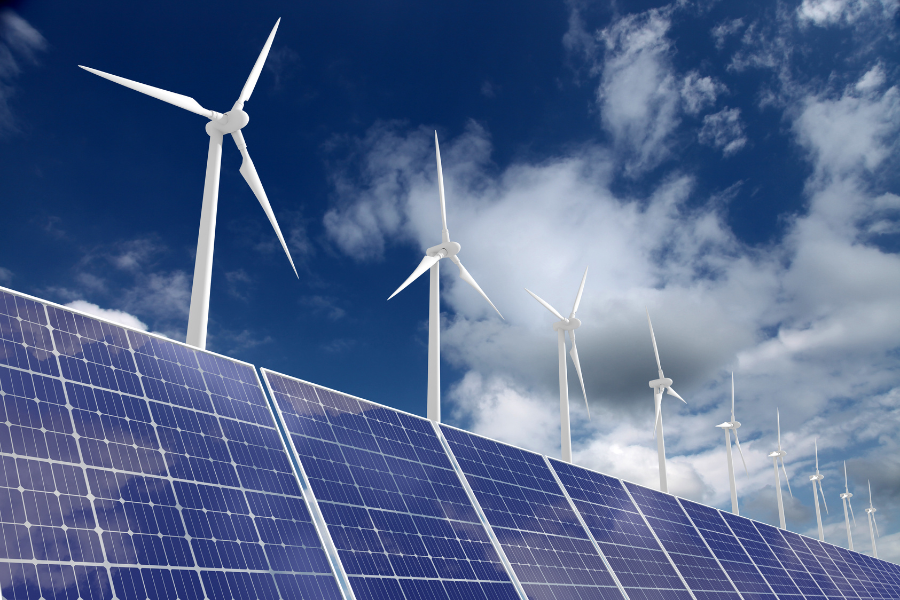- The Beyond Fossil Fuels campaign aims to accelerate the deployment of renewable energy, demand management and energy efficiency measures, in a way that is respectful of nature and territory.
- Governments, companies and financial institutions must increase their ambition to meet the targets set out in the Paris Agreement.
- In Spain, the deployment of renewable projects must go hand in hand with the decarbonization of existing installed capacity.
March 28, 2023 – The International Institute for Law and the Environment (IIDMA), in partnership with more than 40 organizations across Europe, is embarking on the Beyond Fossil Fuels campaign this Tuesday, March 28, which aims to end fossil fuels in the European electricity sector by 2035 at the latest.
Europe has come a long way in the last five years to break its dependence on fossil fuels. Since 2016, 23 countries have announced that they will abandon coal – 17 of them have already done so or will do so by 2030. In fact, in the countries of the European Union, this fossil already produces only 16% of electricity. But much remains to be done. To address the climate emergency, it is essential to eliminate all fossil fuels from the European electricity sector and replace them not only with renewable energies, but also to improve demand management and energy efficiency.
The launch of this campaign is accompanied by the study ‘Freedom from Fossil Fuels’, which shows the measures needed to reduce the demand for coal and gas in the power and heating sector by the end of 2025. In turn, the study calls on governments, companies and financial institutions to make a fossil fuel-free electricity system a reality by 2035.
Although Europe-wide solar and heat pump installation figures reached record highs in 2022, they still fall short of what is needed to replace fossil fuels and achieve decarbonization of the electricity system by 2035. The data presented in the ‘Freedom from Fossil Fuels’ report points out that the continent should deploy 14 onshore and offshore wind turbines every day, and 30 large solar farms to cover areas such as parking lots or degraded land. This deployment of renewable energies, so necessary throughout Europe, must in turn be respectful of biodiversity and the territory.
“In the case of Spain, although in the last year the Ministry for Ecological Transition and the Demographic Challenge has given the go-ahead for the implementation of 182 wind and solar macro-projects, and more than 1,200 smaller ones have been approved by Autonomous Communities, it is necessary to accompany this deployment with the progressive and planned closure of fossil power plants,” says Carlota Ruiz-Bautista, environmental lawyer at IIDMA.
Thus, data from Red Eléctrica indicate that electricity production from non-renewable sources increased by 15.3% in 2022 with respect to 2021, representing 57.8% of electricity generation. It is therefore urgent that both the government and companies move quickly to find solutions that ultimately reduce the use of fossil fuels.
In this sense, Naturgy, one of the companies with the largest number of gas-fired power plants in Spain, increased the electricity produced by its power plants in 2022 compared to 2021, which led to an increase in associated greenhouse gas (GHG) emissions. However, in its consolidated reports, the company uses the concept of “Climate Balance” to indicate that if it had generated the same amount of electricity from coal, it would have emitted more GHG emissions than the emissions from its gas-fired power plants in 2022.
As IIDMA lawyer Quentin Aubineau explains, “the ‘climate balance’ compares Naturgy’s actual GHG emissions and ‘avoided emissions’, i.e., those that could have been emitted by Naturgy if it had generated electricity from a more polluting source than fossil gas. This concept of ‘avoided emissions’ is based only on assumptions”.
Faced with this scenario, the IIDMA succeeded in persuading Naturgy, in its 2022 consolidated report, to make it clear that the concept of ‘Climate Balance’ does not allow measuring an effective reduction of its GHG emissions. In this report, the company itself points out that this concept “does not represent the 0 net emissions target set by the company or the concept of neutrality set out in the Paris Agreement”. Although this is a step forward in terms of the transparency of its activities, and it is true that the company is taking steps to increase its installed renewable energy capacity, it is still insufficient to comply with climate targets if it is not accompanied by the closure of its assets linked to fossil gas.


